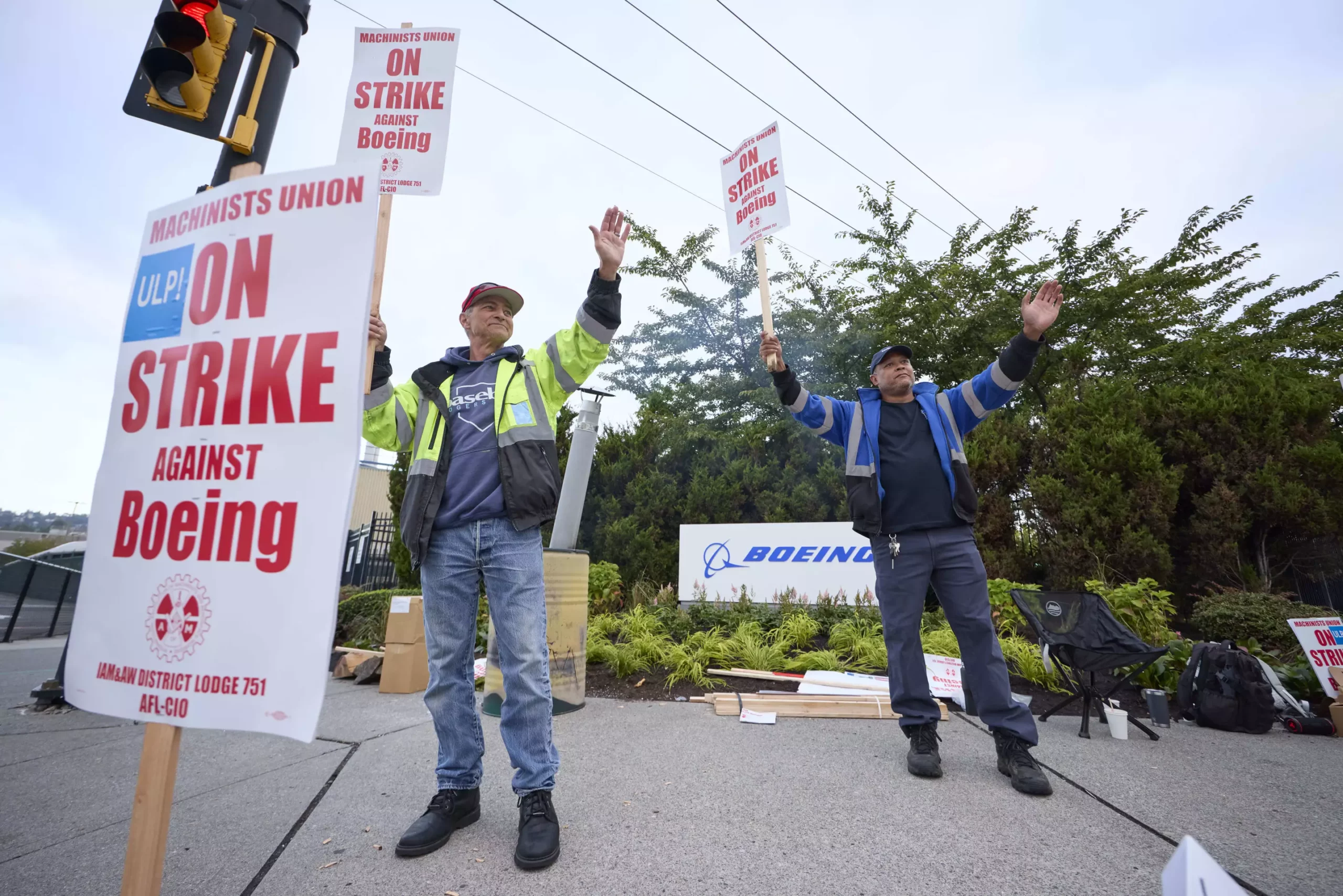In a bold demonstration of solidarity and frustration, nearly 33,000 machinists at Boeing have asserted their rights with a strike that echoes discontent in the face of stagnant wages and rising living costs in the Pacific Northwest. This industrial action followed a sweeping rejection of a contract proposal that, although offering a 25% wage increase over a four-year period, was perceived as inadequate given the context of soaring inflation and exorbitant housing prices. The stark reality for these workers is that more than just a paycheck is at stake; their livelihoods and futures hinge on negotiations that seem increasingly fraught with tension.
The strikes began after members of the International Association of Machinists and Aerospace Workers voted overwhelmingly against the proposed contract, highlighting a significant disconnect between company leadership and the workforce. With the rejection landing at a staggering 94.6%, it was clear that the workers felt their needs were not being adequately represented. This event is symptomatic of broader labor issues at Boeing, where historical grievances and economic pressures converge into a perfect storm of strike action.
Boeing, currently grappling with a series of self-inflicted wounds that have led to losses exceeding $25 billion over recent years, stands on shaky ground in the aerospace market. The company’s poor performance has been compounded by a damaged reputation due to past operational failures, delays, and safety issues. During this tumultuous period, the latest strike adds another layer of complexity to Boeing’s recovery efforts. As airlines reluctantly navigate an uneven economic landscape, Boeing’s management now faces the prospect of halted production on some of their most profitable models, such as the 737 Max and 777 series.
With stock prices plummeting nearly 40% in the current year, the company is fighting an uphill battle for investor confidence. The response to the strike from Boeing indicated an eagerness to return to the negotiation table, but as employees continue to voice strong disapproval of the past contract offers, the financial ramifications of this labor unrest loom large. Boeing’s plans to conserve cash amidst ongoing debt issues are strained further by this labor disruption, a scenario reminiscent of the costly strikes of the past.
Employee Perspectives: Voices of Dissent
From the factory floors of Renton, workers are candid about their dissatisfaction. Individuals like John Olson express frustration over stagnant wages that have failed to keep pace with inflation, underscoring a sentiment that resonates across the workforce. With the last significant contract negotiated nearly two decades ago, many employees feel their hard-fought contributions have gone unrewarded. The promised wage increases, however generous they may appear, lag behind the current economic realities.
The rejected proposal included bonuses and health care cost reductions, yet these measures were regarded as insufficient by the rank-and-file workers. Machinists like Solomon Hammond reflect a resolute determination to fight for better terms. “Wages are just too low,” he insists, revealing a broader sentiment that their labor is undervalued compared to the company’s soaring profits and production demands.
As the strike unfolds, the leadership at the International Association of Machinists finds itself tasked with harnessing member sentiments and strategizing for future negotiations. The local leadership, led by IAM District 751 President Jon Holden, is now focusing on surveying members to ascertain their priorities going forward. The union’s clear message is that past concessions—especially the rollback of traditional pensions—have created a rift between workers and management that must be addressed if a lasting resolution is to be found.
Boeing, for its part, must navigate a fine line between addressing workers’ grievances and managing its financial recovery strategy, a dance fraught with potential pitfalls. As the striking workers unify under the banner of respect and reevaluation of their worth, it becomes evident that this battle is about more than pay; it signifies a fight for dignity in the face of corporate indifference.
The Boeing strike stands as a pivotal moment in the ongoing dialogue between labor and management within an industry recovering from a tumultuous past. As workers demand recognition, fair compensation, and respect, the repercussions of this strike will extend beyond the production lines. The ripple effect could shape future labor relations and corporate strategies within not only Boeing but also throughout the industry as a whole.
In a landscape where the balance of power often tilts toward corporate interests, the resolve demonstrated by these blue-collar workers signals a commitment to advocacy and collective bargaining. Their struggle is emblematic of a larger movement that seeks to redefine labor relations in a post-pandemic world, where employees are increasingly unwilling to accept subpar compensation in lieu of burgeoning living costs. The outcome of this strike is uncertain, but one thing is clear: the fight for fairness in the workplace continues to resonate throughout the corridors of power at Boeing and beyond.


Leave a Reply